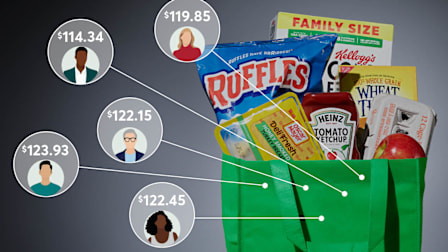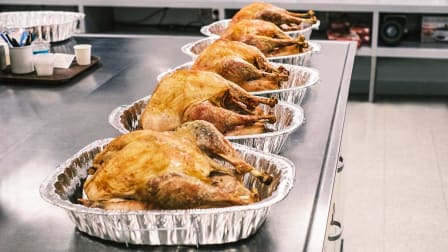How to Save at the Supermarket
Feeling the squeeze at the grocery store? These in-store perks and programs can make your weekly food run less painful.
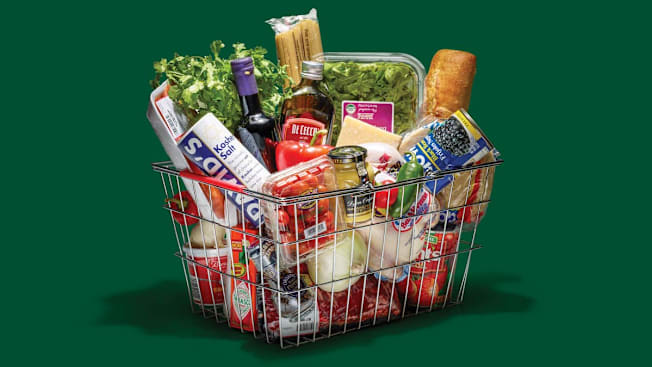
Despite the popularity of online delivery services, most food shoppers in the U.S. still go to stores to buy groceries. And to keep us coming, stores both big and small are innovating in ways that are significantly changing—and often improving—the food shopping experience.
New technology is one source of the changes. There are shopping carts that weigh your produce for you. Store coupons that appear on your phone. Palm readers that connect the veins in your hand to your credit card number.
But supermarkets are also expanding loyalty and coupon programs, offering more high-quality and lower-cost house brands, and providing accommodations and conveniences that make food shopping less of a hassle. Some are even luring us in with experiences—the opportunity, for instance, to meet up with a friend at a smoothie bar, as you can at the Erewhon grocery store chain in Southern California.
The Rise of the Private Label
You might assume that a store brand of any given food is a poorer-quality imitation of its name-brand cousin. But supermarkets these days are working to change that perception because they have bigger profit margins on store-brand foods, and they know that having high-quality, budget-friendly store brands makes you want to shop with them, says Burt Flickinger III, managing director at the Strategic Resource Group, a consumer industry consulting firm in New York.
Perhaps to add cachet, stores are offering more “specialty” house brands. Albertsons has nine, including Open Nature (for preservative-free items) and Waterfront Bistro (for frozen shrimp and other seafood). In 2024, Walmart launched Bettergoods, designed to offer more elevated culinary experiences while still being less expensive, with offerings such as Plant-Based Cauliflower Thin Crust Roasted Veggie Pizza and Cold Brew Coffee Premium Ice Cream.
In Flickinger’s view, shoppers make no sacrifice in quality by choosing store brands. They cost 15 to 25 percent less than their brand-name versions, a discount that increases to 35 to 50 percent for personal care and health products, he says.
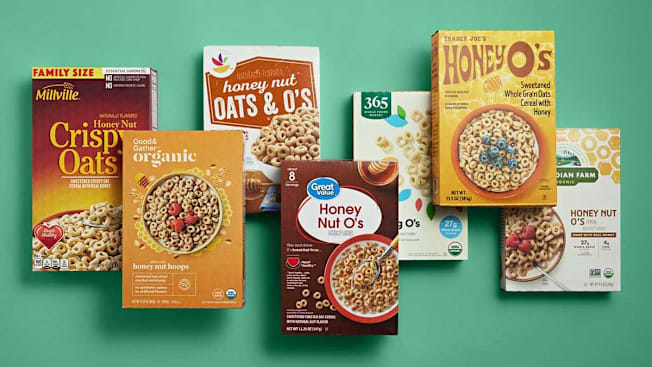
Photo: Scott Meadows/Consumer Reports Photo: Scott Meadows/Consumer Reports
Rewarding Loyalty Programs
Supermarket loyalty clubs have been around for a while, but to attract new customers and retain existing ones, retailers are making them more rewarding. In the past, they gave you access to sale pricing on items. Today, in addition to discounts, several retailers offer cash-back-type programs that reward you for in-store spending. For example, when you join the Kroger Plus loyalty program, you can earn 1 fuel point for every dollar you spend shopping. One hundred fuel points earn you 10 cents off a gallon of gas at Kroger Family of Stores Fuel Centers and partner gas stations.
Stop & Shop and the midwestern grocery chain Hy-Vee have similar loyalty rewards programs.
Kroger has taken it even further with its Boost and Boost Essential upgraded loyalty programs, which offer additional rewards. These include 2 fuel points per dollar spent, free delivery on orders of $35 or more, and access to Disney+, Hulu, or ESPN+ streaming services. But you have to pay for both Boost programs: $99 or $69 per year, respectively, or $12.99 or $8.99 per month.
Mobile Apps for In-Store Shopping
Supermarket apps have been reimagined to be useful not just for online ordering but for in-store shopping as well. If you’re a loyalty club member, some store apps will allow you to virtually clip coupons and add them to your account. Meijer’s mobile app is typical: You browse coupons and click on the ones you want. Then they’re automatically applied to your order at checkout.
Some supermarket apps do even more. Instead of having to scour the aisles for on-sale items, Hy-Vee’s app will sort them into a list for you. The Walmart app shares inventory status at your designated store so that you can make sure what you want is in stock, and it has a store map to help make your shopping more efficient.
Smarter Sampling
The free samples are part of the fun when visiting Costco. But for the stores that host them, sampling stations are an expensive proposition.
Now, “companies looking to connect with customers are leaning into the idea of automated sampling,” says Jordan Berke, CEO at Tomorrow, a digital retail consulting firm. For example, Freeosk is an automated sampling station available at more than 1,400 supermarkets across the U.S., including some Sam’s Club and ShopRite stores. Users who have downloaded the Freeosk app can scan a QR code at the kiosk to get an individually wrapped sample. Recent offers have included Little Bites Fudge Brownies and Member’s Mark Better Nut Bar.
Other stores offer try-before-you-buy options. At Whole Foods, staffers can “open a bag of chips, slice a piece of fruit, or twist open bottled iced tea” if they’d like to taste them, according to the company website. Some Trader Joe’s locations also offer samples on request, but the policy varies from store to store.
Speedy, No Surprises Checkout
Stores are experimenting with automated checkout and payment technology, which can help you keep track of your spending in-store. Some Kroger, Schnucks, and ShopRite stores have piloted “smart carts” equipped with sensors and scanners that keep a running tally of items you put in them. The carts have an integrated scale that weighs produce and a screen where you can keep an eye on the running total and pay for your purchases without waiting in a checkout line.
Since 2022, Whole Foods Market has been testing Dash Cart, its own version of a smart cart. And all Whole Foods markets, as well as some other grocery and convenience stores, are equipped with Amazon One palm readers, which allow you to map your palm and its underlying vein structure via your smartphone to link to a payment method.
Savings for Older People
Supermarkets are also finding ways to offer perks to older people. At the 139 Fred Meyer locations in the Northwest, customers ages 55 and up get 10 percent off the store’s private-label brands on the first Tuesday of every month. Fry’s Food Stores in Arizona offer a 10 percent discount on all grocery items to the 55-and-up crowd at its 130 stores on the first Wednesday of the month. Discounts are offered more frequently at Gristedes in New York City, where people 65 and older receive 10 percent off every Tuesday.
Many large supermarkets, including Kroger and Walmart, also have motorized seated shopping carts on hand for folks who need them.
Nationwide Supermarket Chains
A mix of small independent grocers and large regional chain supermarkets is primarily responsible for keeping our cupboards full. But in recent years, a handful of grocers have been expanding their national presence. If one of the stores below isn’t already in your neck of the woods, it may be soon.
Aldi has more than 2,600 stores in 39 states and the District of Columbia. Based in Germany, the store is bare-bones—you’ll generally find no pharmacy or cafe, and it neither issues nor honors coupons. But you’ll find low prices on Aldi-exclusive products, which make up 90 percent of the offerings. Be sure to bring a quarter, as you’ll need it for a shopping cart deposit.
Costco’s rotisserie chickens have become a national obsession and are now roasting at over 600 locations across 47 states. The warehouse club derives revenue from membership fees (either $65 or $130 per year) that help keep the markups on the products it sells—most of which are sold in bulk—low. While typical supermarkets stock around 30,000 products, Costco stocks just over 4,000. Its house brand, Kirkland Signature, is top-notch.
Target can now be found in all 50 states with more than 1,980 stores, most of which sell food at competitive prices. It has several private-label grocery brands, including five for its wine and spirit collections. If you pay with a Target Circle credit card, you get 5 percent off your purchases.
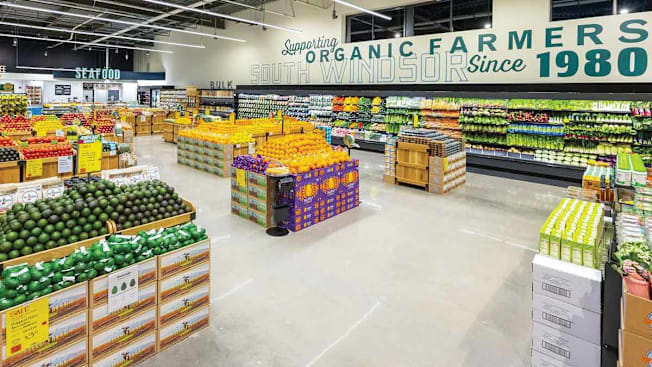
Photo: Whole Foods Photo: Whole Foods
Trader Joe’s, with 608 stores in 42 states, calls itself a national chain of neighborhood grocery stores. The company claims that its prices are substantially lower than those at typical supermarkets because it stocks private-label offerings almost exclusively. The store doesn’t issue or redeem coupons and doesn’t have sales. And there’s no loyalty club, online shopping, or curbside pickup.
Walmart has 3,560 Supercenters—stores that sell general merchandise and also feature full-service supermarkets—as well as 672 smaller-footprint Neighborhood Markets. “Everyday Low Prices” is the company’s slogan. The retail behemoth’s buying power enables it to get lower wholesale prices and pass the savings on to shoppers.
Whole Foods, known for its wide selection of organic products, has 528 stores across 44 states. The grocer is sometimes referred to as “whole paycheck” for its high prices, but its private label 365 Everyday Value and Whole Foods Market brands are less pricey. Acquired by Amazon in 2017, the walk-in stores also provide a hub for pickups and returns from the online retailer.
Grocery Chains With Something Extra
Some shoppers want more from their supermarkets than just low prices. Here’s how some stores appeal to customers who prize a more elevated shopping experience.
Complimentary Cookies or Fruit
That’s what many Florida-based Publix supermarkets offer kids, who can have their pick of chocolate chip or sugar cookies or a piece of fruit for tagging along on a grocery run. Just head to the bakery to ask for a cookie or to the produce department, where options may include a banana, an apple, or a mandarin orange.
Health Checks
Compare Foods in North Carolina partners with local healthcare systems to host free screenings for diabetes, cholesterol, and mammograms. Hy-Vee stores offer a 1-hour personalized shopping experience with a dietitian who can tailor food recommendations to meet individual needs. The $25 fee is waived for shoppers who make a grocery purchase of at least $100.
Free Knife Sharpening
To stay a cut above its competitors, Raley’s Supermarkets, with 121 stores in California and Nevada, offers free knife sharpening. Shoppers can hand over up to three dull blades at a time to an employee in the butcher department and collect them in 24 hours.
Stores With a Cafe
When it comes to elevating the grocery store experience, Erewhon in California is in a class by itself. Its 10 outposts in the Los Angeles area have cafes with organic food and smoothie bars featuring the beautifying Strawberry Glaze Skin Smoothie with organic fruit, vanilla collagen, and sea moss. Some stores even have valet parking.
In-House Bakeries
Texas-based H-E-B, which operates more than 440 stores in Mexico and Texas, is renowned for the tortillas it produces daily. If your timing is good, you could be rewarded with a free sample fresh from the oven.
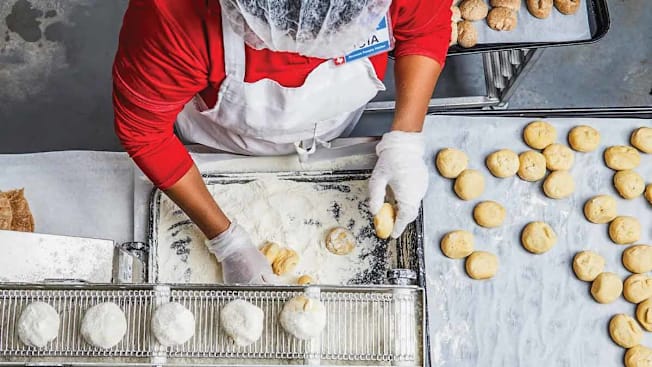
Photo: Hayden Spears Photo: Hayden Spears
Editor’s Note: A version of this article also appeared in the August 2024 issue of Consumer Reports magazine.
@consumerreports Nowadays, it’s no hidden secret that many grocery store brands rival their name-brand counterparts in both price and quality, but which store brand has the edge? Answer: It depends on the product. Learn more through the link in our bio. #foodtiktok #groceryshopping #foodshopping #grocerytok
♬ original sound - Consumer Reports

















